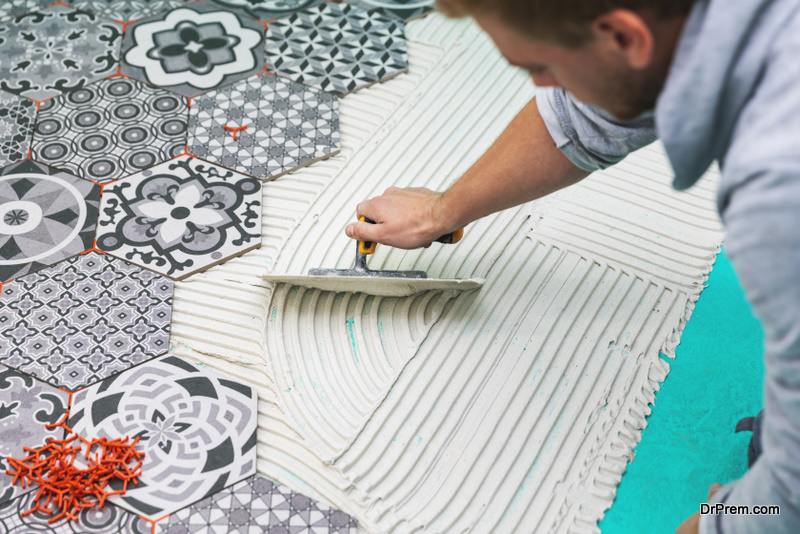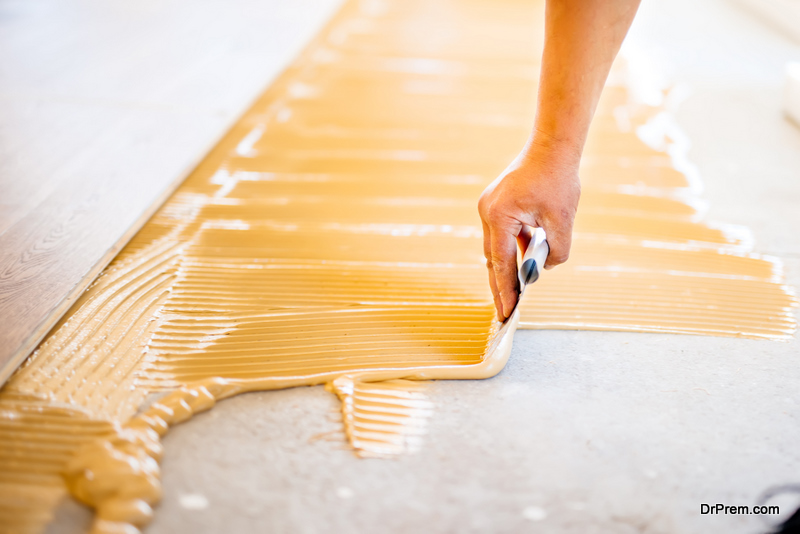The building and construction industry comprises the biggest market for adhesives and sealants. They are used in the following applications:
- Underlying floors
- Ceramic tiles
- Roofing
- Air conditioning and ventilation
- Laying carpets
- Wallcovering among others
Bonded houses
 With architectural advancements, timber is easily glued together with the most recent adhesive materials for safe construction. There are buildings today in the world that are purely built using timber hence requiring adhesive glues to stabilize the structure and designing wood materials to the needed shapes. The polyurethane adhesive creates adhesive bonds that are friendly to the environment and human health.
With architectural advancements, timber is easily glued together with the most recent adhesive materials for safe construction. There are buildings today in the world that are purely built using timber hence requiring adhesive glues to stabilize the structure and designing wood materials to the needed shapes. The polyurethane adhesive creates adhesive bonds that are friendly to the environment and human health.
Adhesives used in flooring
 Imagine walking on a floor that is damaged or not properly floored! There are possibilities of one tripping and falling due to the floor conditions. The adhesives beneath the floor surface usually endure the loads on the floor. They are ideal for apartment use complexes and schools to ground different materials on the floor like working tables.
Imagine walking on a floor that is damaged or not properly floored! There are possibilities of one tripping and falling due to the floor conditions. The adhesives beneath the floor surface usually endure the loads on the floor. They are ideal for apartment use complexes and schools to ground different materials on the floor like working tables.
They are strong and help create permanent flooring in different buildings and locations. The building and interior specialists make recommendations on the suitable adhesive to use, and there are the multi-purpose solutions effectively used in several flooring projects.
Several factors are considered when selecting the suitable flooring adhesive for a project to attain the required results. Some of the considerations include;
1. Substrate
Is the material that is directly underneath the finish flooring. The substrate requires different adhesives than the flooring installations on dry or above the grade concrete bonding.
2. Location
Generally, interior installations are not subjected to wear and tear as compared to exterior installations. Adhesive chosen for the exteriors needs to have an adaptive capacity to handle strenuous wear and tear conditions like extreme weather conditions.
3. Recommendations
Found on the packaging instructions as they give detailed information on the adhesive uses and the materials it is designed for, and the relevant application conditions of the product.
4. Toxicity
Some of the flooring adhesives contain volatile organic compounds, and they are harmful to air quality in enclosed areas like indoors, causing respiratory issues like asthma. Adhesive products have different levels of volatile organic products; hence one should try and choose the lowest content.
5. The self-adhesive tile
Some of the resilient and reliable floorings are linoleum tiles, cork, and vinyl. They have the self-adhesive backing; hence installation only requires one to peel off the protective paper layer and then put the tile in place without adding extra adhesive.
6. Curing or drying time
Choose the adhesive that will work with your schedule when it comes to its drying pace, and different adhesives require various amounts of mixing at each flooring stage.
7. Consistency
Select the adhesive that is easy to spread across the substrate and has easy application procedures.
8. Shelf life
Some adhesives are stored for years, and their quality is not compromised and vice versa. Carefully check the expiry date of all the glues before making a purchase.
9. Coverage
Consider the floor size that needs to be covered to avoid overbuying or underbuying, leading to product wastage.
In conclusion, always follow the floor adhesive manufacturer’s instructions and use the products in well-ventilated areas. Gloves and goggles are highly recommended to increase skin and eye protection.
Article Submitted By Community Writer




